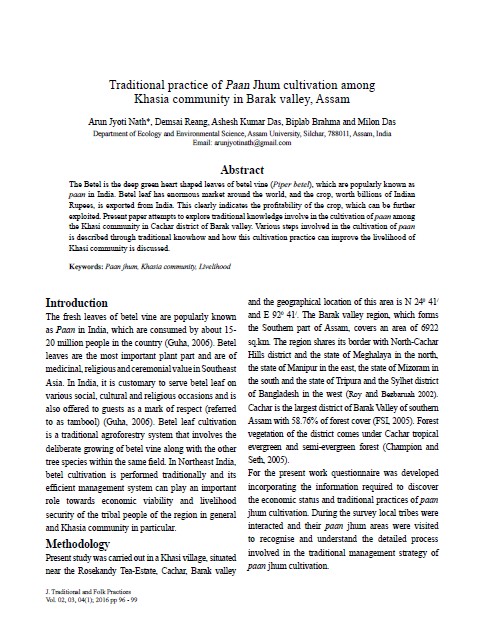Traditional practice of Paan Jhum cultivation among Khasia community in Barak valley, Assam
Keywords:
Paan jhum, Khasia community, LivelihoodAbstract
The Betel is the deep green heart shaped leaves of betel vine (Piper betel), which are popularly known as paan in India. Betel leaf has enormous market around the world, and the crop, worth billions of Indian Rupees, is exported from India. This clearly indicates the profitability of the crop, which can be further exploited. Present paper attempts to explore traditional knowledge involve in the cultivation of paan among the Khasi community in Cachar district of Barak valley. Various steps involved in the cultivation of paan is described through traditional knowhow and how this cultivation practice can improve the livelihood of Khasi community is discussed.


